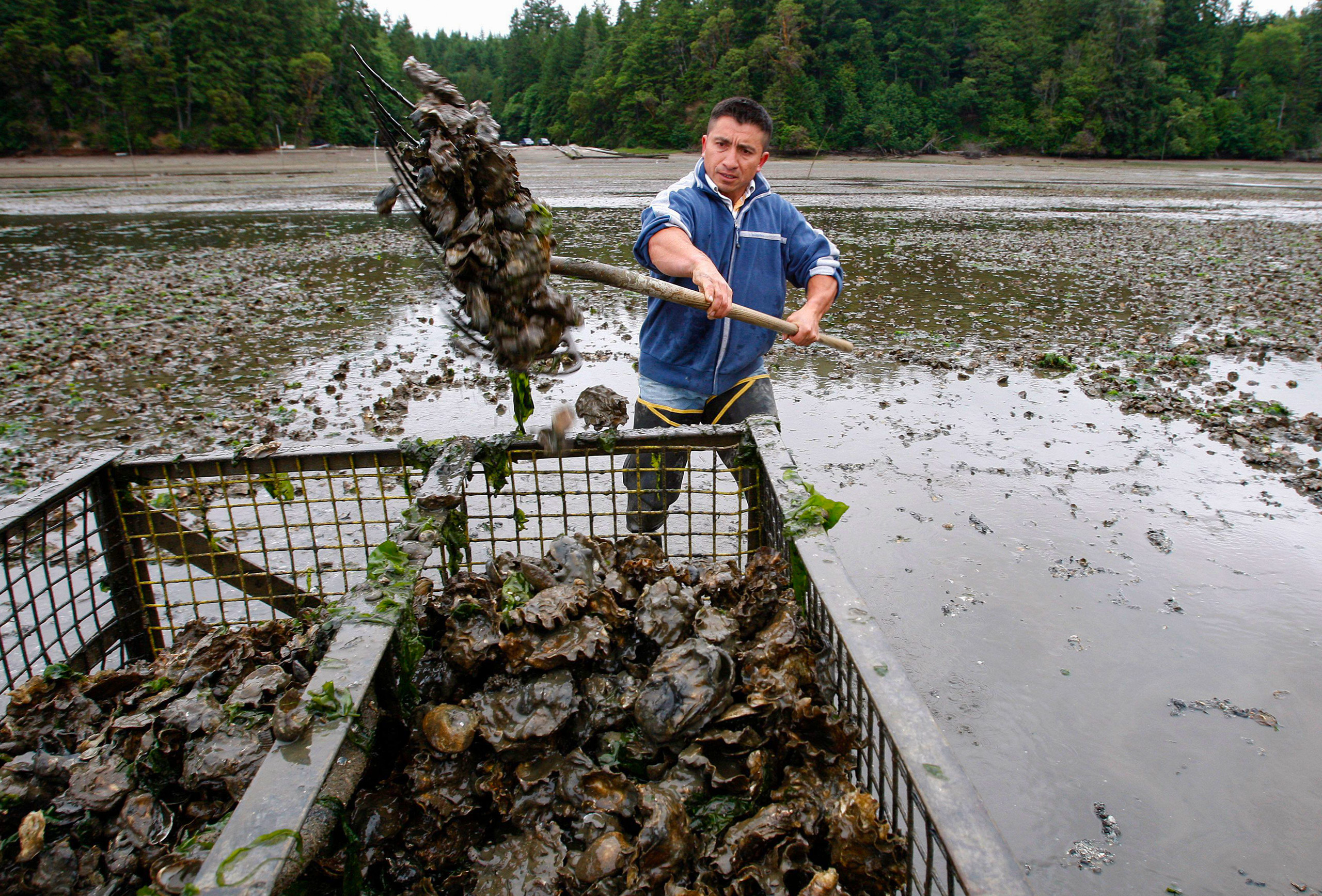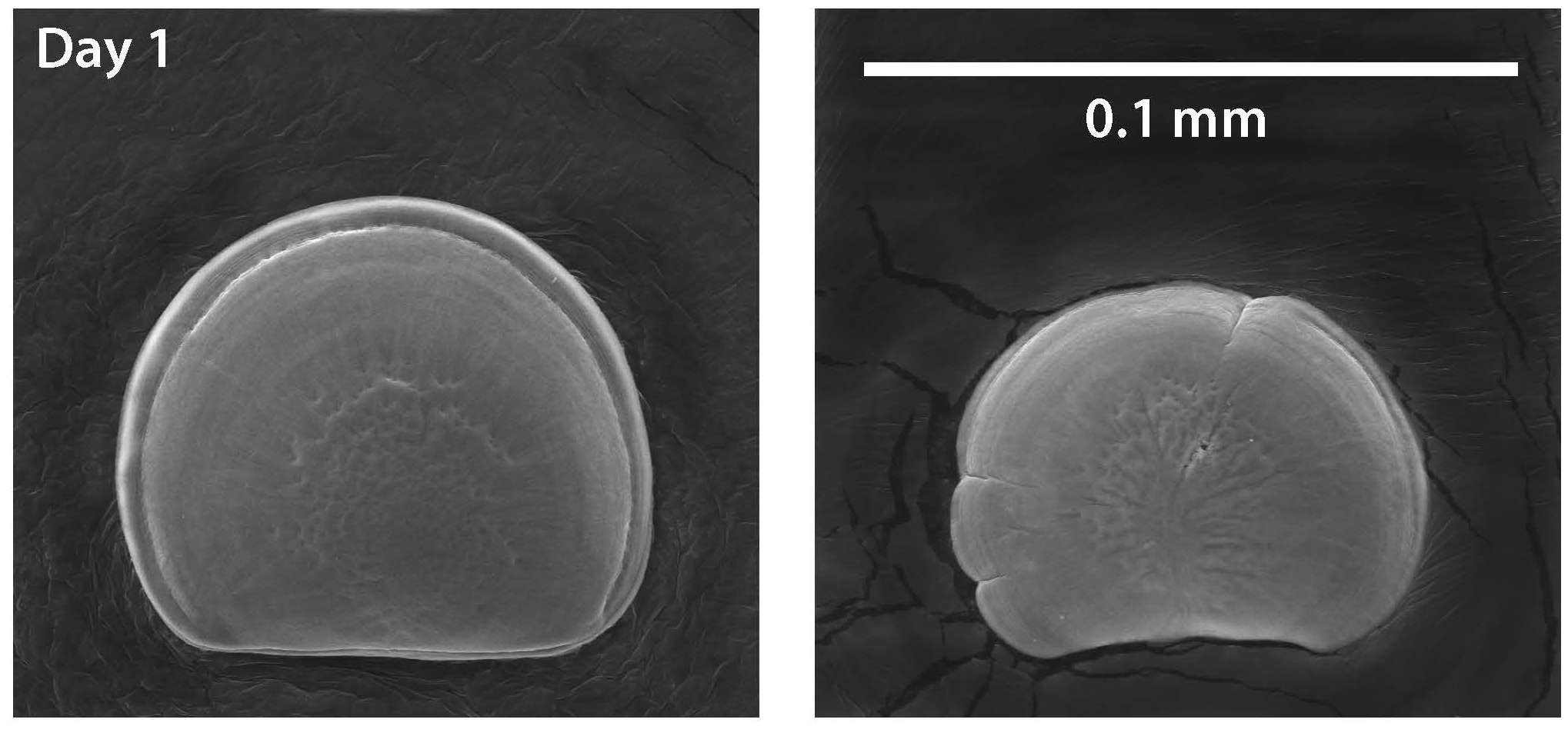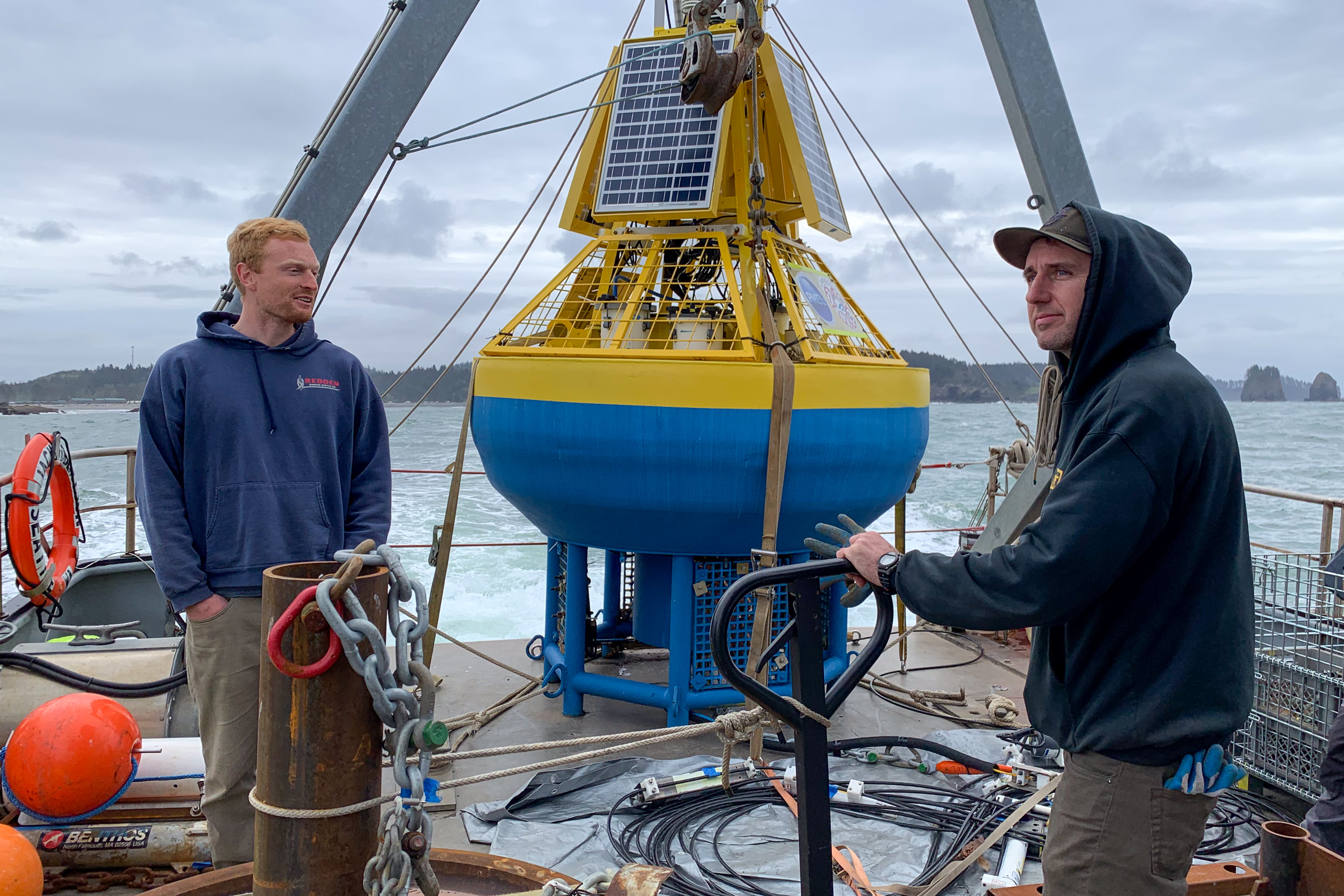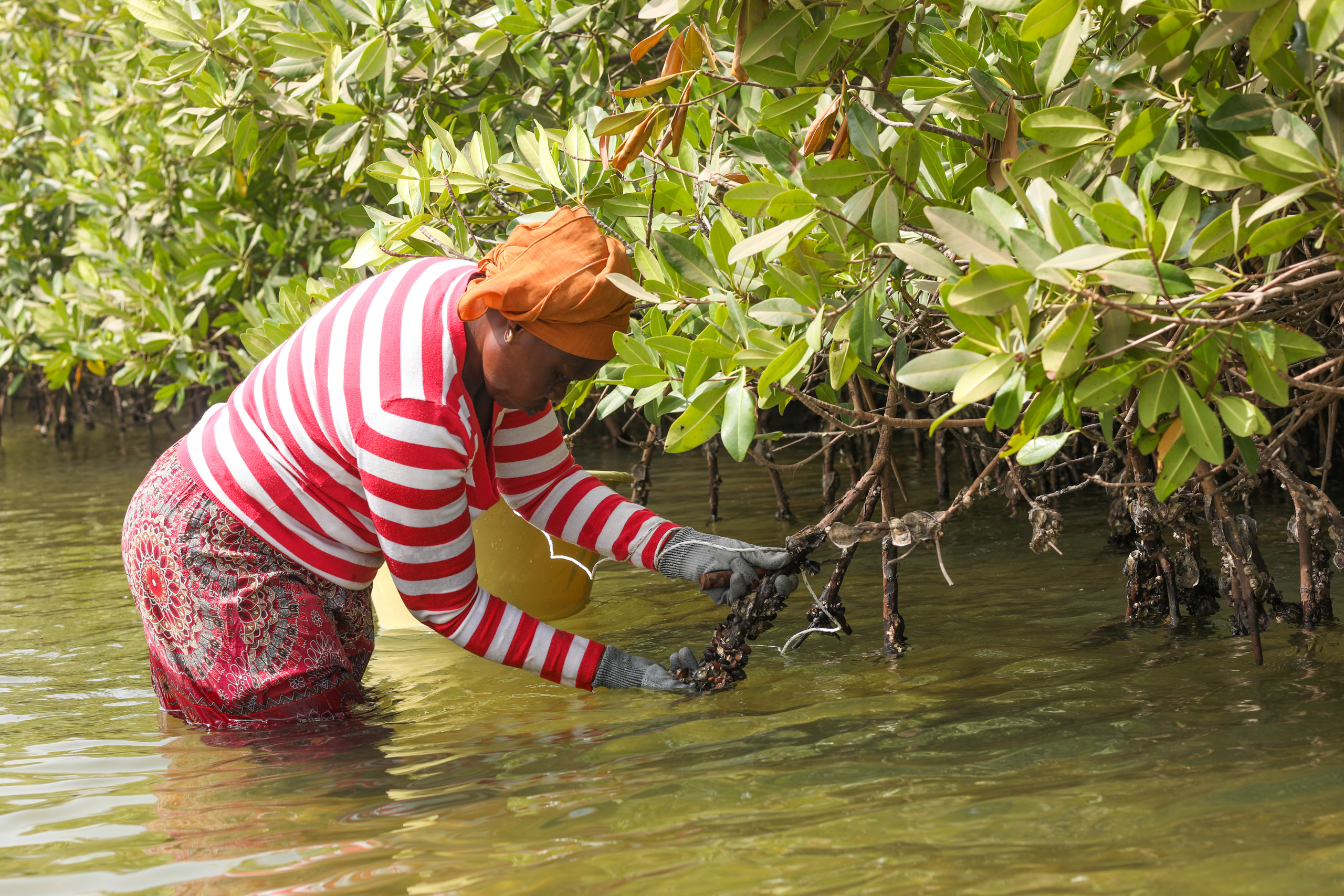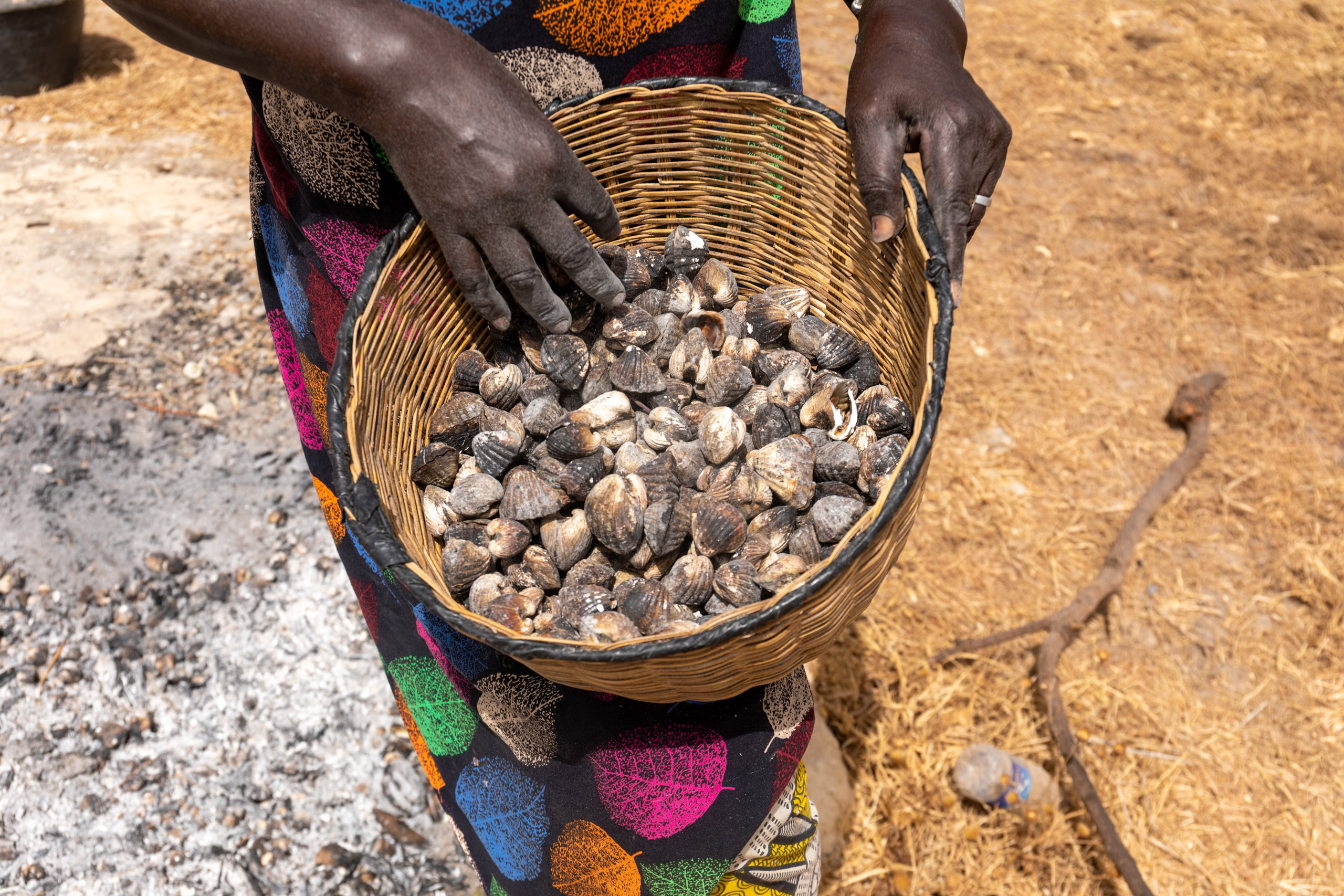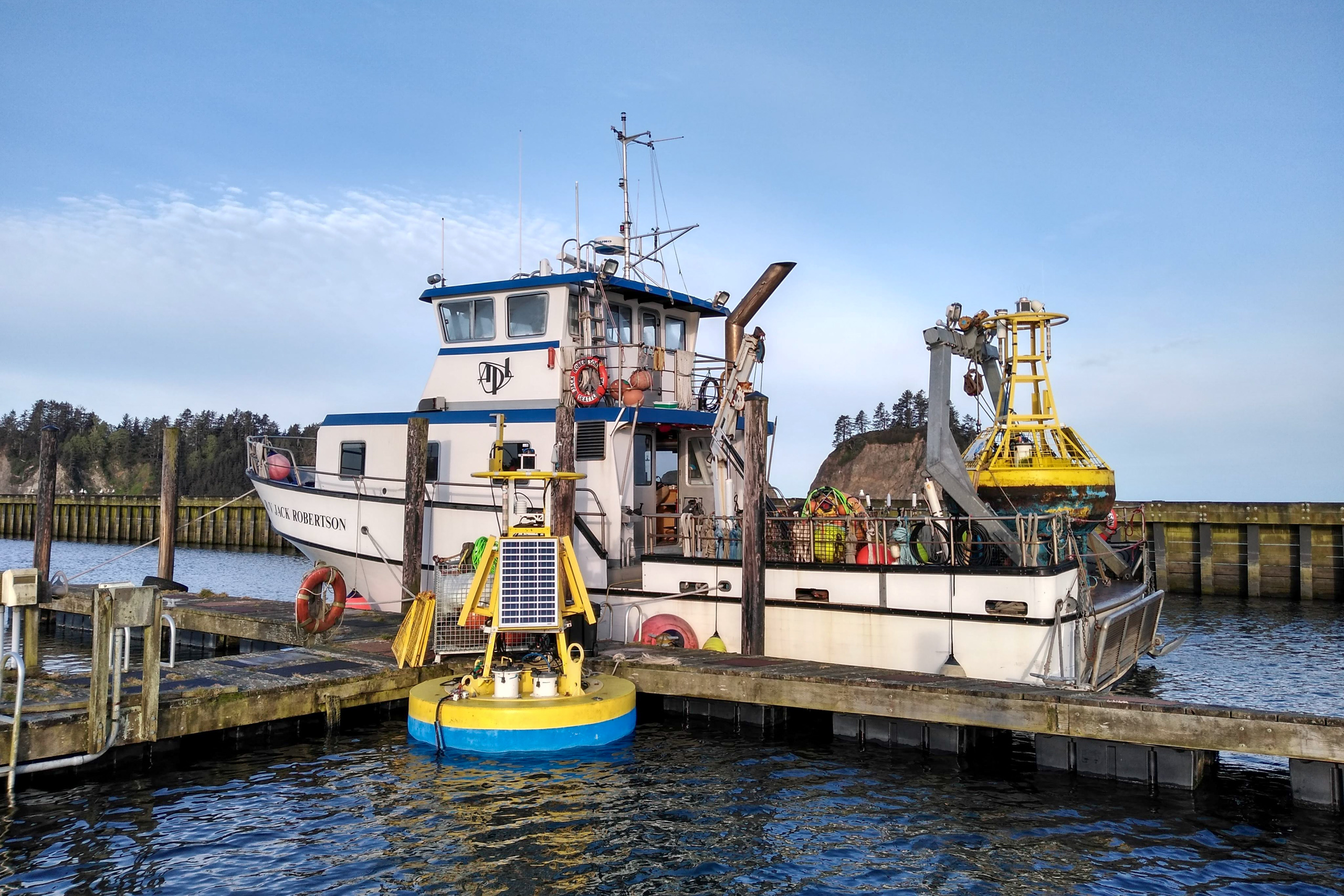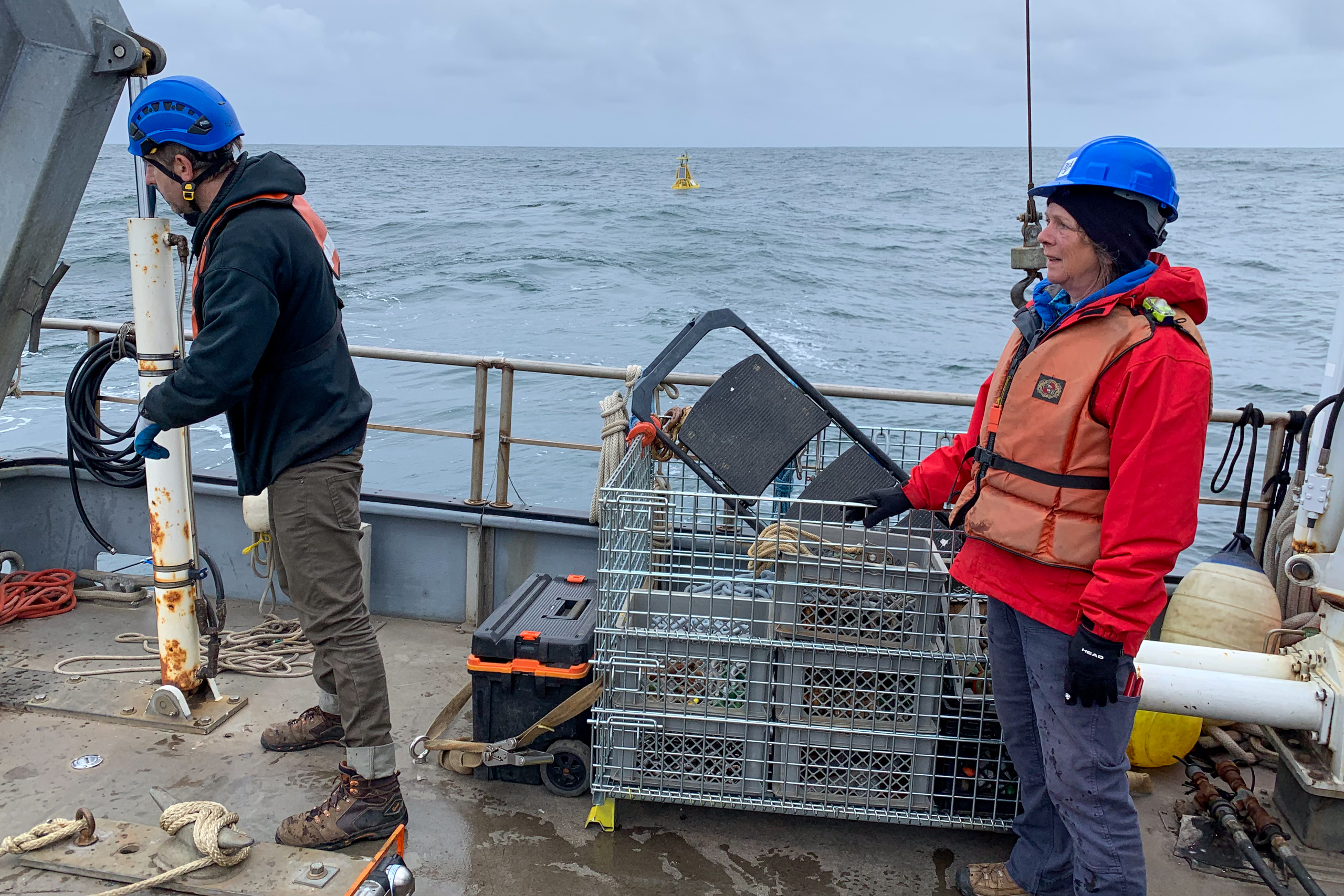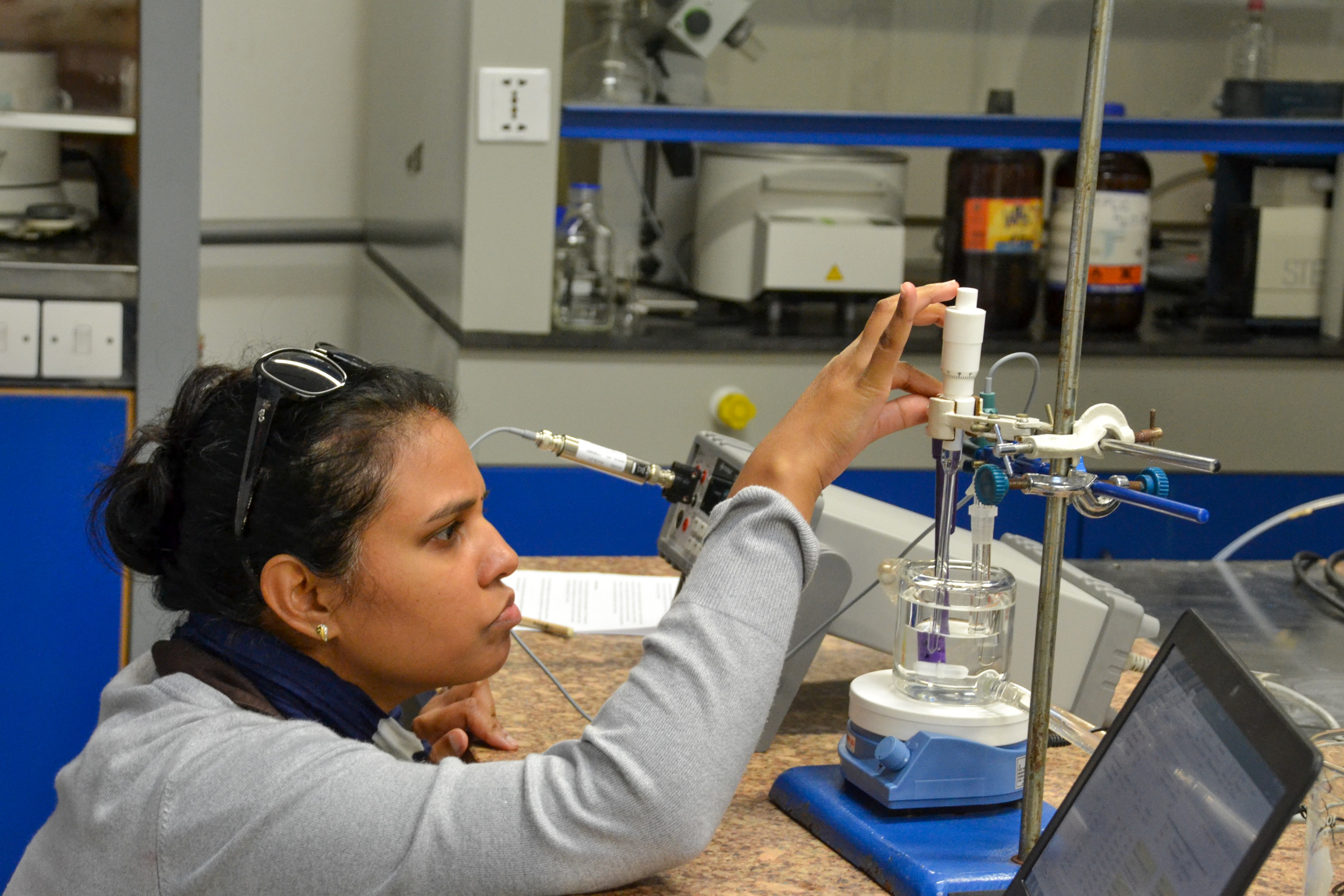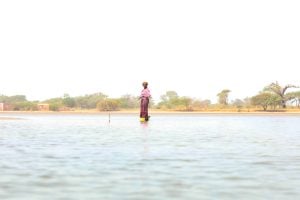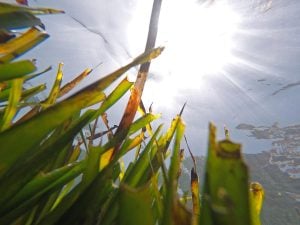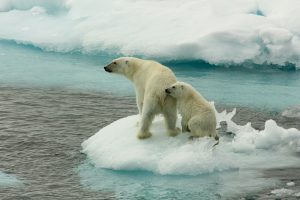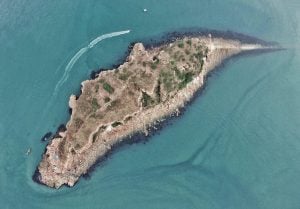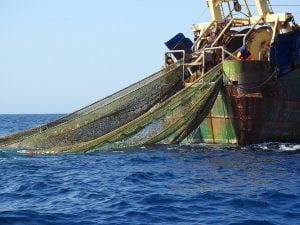Editor’s note: Ocean acidification is damaging shellfish from West Africa’s Atlantic shores to the Pacific coast of North America. In this the final instalment of a two-part series, Dialogue Earth looks at how lessons learned on the US west coast might help. Read part 1, about Senegal’s shellfish sector, here.
Oregon and Washington are at the centre of the shellfish trade on the west coast of the US. In 2007, the industry was valued at USD 111 million when it came close to collapse.
It began with a mystery: oyster larvae were dying in their millions in the coastal hatcheries that supply surrounding shellfish farms. Farmers and scientists initially believed they were being ravaged by a bacterial disease. It took a few months to discover the true culprit: the ocean water they had been pumping into their tanks had become more acidic.
This change was due to the overlap of human-caused CO2 emissions and a seasonal upwelling phenomenon called the California Current system.
Winds blow towards the equator during the spring and summer, pushing surface water southwards and offshore. As these waters move, they are replaced from below by deep, cold water, rich in carbon.
At a more global scale, CO2 in the air gets absorbed by the ocean, acidifying it in the process. The extra carbon raised by the upwelling had increased the acidification tied to rising CO2 levels.
Oysters rely on the chemical compound calcium carbonate for their shells. Larvae use it in the form of aragonite, while juveniles and adults build their more substantial casings from the compound’s calcite form.
Carbonate levels in the ocean decrease when acidity levels rise. The California Current upwelling was therefore “making it more and more difficult for the oyster larvae to lay down their aragonite shells,” explains Jan Newton, co-director of the Washington Ocean Acidification Center, who was assisting with monitoring oyster hatcheries at the time.
Ocean acidification
More CO2 in the atmosphere means more CO2 taken up by the ocean. This leads to a series of chemical reactions that increase the concentration of hydrogen ions in seawater and make it more acidic.
In 2008, another powerful California Current upwelling almost destroyed the Whiskey Creek hatchery in Netarts Bay, Oregon – one of the largest such facilities in the US.
As well as nearly closing the hatchery, the event had “significant ripple effects on the availability of oyster seed [larvae that have settled and formed shells] for growers for several years,” says George Waldbusser, a researcher in ocean acidification at Oregon State University.
It galvanised the industry into action.
Acid tests ahead
In 2010, oyster growers teamed up with academics and state and tribal agencies to deploy buoys monitoring pH, salinity, temperature, oxygen and aragonite levels in water used by local hatcheries.
With industry, state and national funding, that network grew, and ultimately became part of the US Integrated Ocean Observing System (IOOS). This network of over a thousand ocean sensors spanning the entire US coastline is “like a national weather service but for coastal ocean data”, says Newton.
Real-time data about imminent upwelling events now enables hatcheries to react by “buffering” water in hatchery tanks – adding chemicals that reduce changes in acidity. At some sites, that has helped to significantly lower the levels of damage seen in previous upwelling years.
Newton believes fishers would otherwise have been left exposed to acidification’s invisible threat. “The advancement was made because people were talking to each other,” she says.
But technology to monitor and then treat water is not available in many places where ocean acidification is causing problems for shellfish farmers and harvesters.
Building capacity and resilience
Experts in the field increasingly draw attention to the discrepancy between countries in the Global South and North.
West Africa’s coastal waters are strikingly similar to those in the US Pacific Northwest. Both are highly productive, provide vital income to local people and are fed by upwelling systems that make them particularly vulnerable to acidification.
Fishers on Senegal’s coast have also been reporting problems with their oyster and other shellfish harvests.
“This is a real concern, because throughout the West African coast, shellfish occupy an important place in the household socio-economy,” says Malick Diouf, former director of the Cheikh Anta Diop University Institute of Fisheries and Aquaculture in Senegal. “[They are] a source of animal protein, and a source of financing for women with the establishment of the market economy.”
But those working in the shellfish industry lack the resources their US counterparts have to monitor and adapt. As climate change intensifies, this could have significant effects: declining seafood harvests is already a significant driver of job insecurity and Senegalese migration.
Sheck Sherif is the Africa Hub co-chair of the Global Ocean Acidification Observing Network (GOA-ON), an international group working to detect and understand the drivers of ocean acidification.
Sherif says there is limited awareness amongst many politicians, researchers and members of the public about the region’s vulnerability to ocean acidification. “For West Africa, I need to talk maybe ten times more than my colleagues [in other parts of the world] will talk, for people to listen,” he tells Dialogue Earth.
To date, the issue has received relatively little support from West Africa’s regional governments.
“It’s a tough one, it’s a new science. Our governments in the sub-region don’t understand this,” says Sherif. He believes a fleet of “ocean champion” local experts are needed to raise the profile of ocean acidification in West Africa and attract investment to tackle the problem.
Sherif recently submitted a USD 2.9 million proposal to the co-chairs of GOA-ON and international partners, to establish an academic hub for ocean research in the region, which would include a focus on ocean acidification. Others agree that such capacity building in Senegal and other West African nations is vital.
“It sounds simple, but I’d like to see PhD-level scientists trained in first-class institutions, and given the instruments they need to collect data,” says Todd Capson, a research associate of the Paris Institute of Planetary Physics (IPGP), University of Paris.
Responsibility for this should not rest solely with Senegal and other nations in the Global South, experts say.
“There’s an equity issue,” says Jessie Turner, executive director of the International Alliance to Combat Ocean Acidification (OA Alliance). “To some extent, there’s a luxury of time for other governments or other areas in the world to be thinking about what can be done to address ocean acidification near shore. I think there’s a responsibility, to some extent, for those governments to step up and fill the funding and fill the work.”
Even if awareness grows, it won’t be enough to simply deploy dozens of sensors.
Following the lessons from the Pacific Northwest oyster hatcheries, a whole infrastructure of expertise is required to maintain monitoring tools, analyse data and translate that information into action.
According to Eric Machu, there are currently no ocean chemists in Senegal who could lead this. Machu is a researcher in the Laboratory for Ocean Physics and Remote Sensing at the French National Research Institute for Sustainable Development: “You still need people, you need to build a consortium around such a [monitoring] device.”
Saving Senegal’s shellfish industry
Some slow progress is being made in improving the situation, for instance through international collaborations to train West African graduates in marine science and climate change. But there are huge gaps.
GOA-ON distributes low-cost, portable kits to measure ocean acidification, developed with support from The Ocean Foundation. But while these have reached 17 countries, there are none in West Africa yet.
While countries build the capacity to monitor, there are some interim steps they can take, Turner says. Her organisation, the OA Alliance, is working to develop action plans to mitigate ocean acidification at hyperlocal scales. Some examples include reducing effluent flows into the ocean that can worsen acidification and deoxygenation; and planting seagrass meadows or kelp beds to absorb carbon and increase the surrounding pH of nearby waters.
“This is a management problem. It’s not just an ocean-observing problem,” she says.
As things stand, the shellfish workers are in desperate need of solutions.
“More and more students have started coming around this area to conduct their research,” says Fatou Ndong-Sarr, president of the Singhiyame Niodior Transformation Unit, a shellfish harvesting project in Senegal. “The stakeholders should help address these problems so the sector can continue to create more jobs.”
The UN Ocean Acidification Research for Sustainability programme stresses the need for data and evidence to help develop effective mitigation and adaptation strategies.
But people like Ndong-Sarr in West Africa find it tough to adapt as the lack of data makes understanding what is happening hard, and implementing fixes near impossible. If they can access help to save their shellfish, the impact on their lives will be huge.
“Just look at it,” says Ndong-Sarr. “Dry oysters are very expensive and income [from them] can take care of most of our needs.”
For that to continue to be the case, Senegal’s oyster harvesters may need the same kind of assistance given to those on the north-western US seaboard.
Amendments: This article was amended on 14 March 2024 to replace an image of a buoy used to measure algal blooms with one of a buoy used to measure ocean acidification. In addition, the image of a scientist working on a computer has been replaced with one of marine biologist Jennifer Hagen.
